-
 Bitcoin
Bitcoin $101,898.5005
-0.75% -
 Ethereum
Ethereum $2,258.1125
-1.07% -
 Tether USDt
Tether USDt $1.0004
0.01% -
 XRP
XRP $2.0178
-2.93% -
 BNB
BNB $624.0243
-1.53% -
 Solana
Solana $134.3298
-0.90% -
 USDC
USDC $0.9999
0.01% -
 TRON
TRON $0.2675
-2.05% -
 Dogecoin
Dogecoin $0.1538
-1.96% -
 Cardano
Cardano $0.5482
-1.11% -
 Hyperliquid
Hyperliquid $35.5636
5.45% -
 Bitcoin Cash
Bitcoin Cash $453.4902
-1.66% -
 Sui
Sui $2.5134
-2.97% -
 UNUS SED LEO
UNUS SED LEO $9.1292
1.77% -
 Chainlink
Chainlink $11.8457
-1.60% -
 Stellar
Stellar $0.2312
-2.73% -
 Avalanche
Avalanche $16.9721
0.29% -
 Toncoin
Toncoin $2.7549
-3.82% -
 Shiba Inu
Shiba Inu $0.0...01081
-1.10% -
 Litecoin
Litecoin $80.8250
-0.71% -
 Hedera
Hedera $0.1374
0.21% -
 Monero
Monero $305.4827
-2.36% -
 Ethena USDe
Ethena USDe $1.0006
0.00% -
 Dai
Dai $1.0000
-0.01% -
 Polkadot
Polkadot $3.2085
-3.12% -
 Bitget Token
Bitget Token $4.0845
-3.13% -
 Uniswap
Uniswap $6.3353
-1.63% -
 Pi
Pi $0.5085
-0.70% -
 Pepe
Pepe $0.0...08913
-3.82% -
 Aave
Aave $232.7090
-0.58%
How to combine KDJ with the moving average system? What are the requirements for the moving average when the golden cross occurs?
Combining KDJ with moving averages enhances trading by confirming trends and reversals; a golden cross requires positive slopes, increased volume, and bullish price action.
May 24, 2025 at 07:36 am
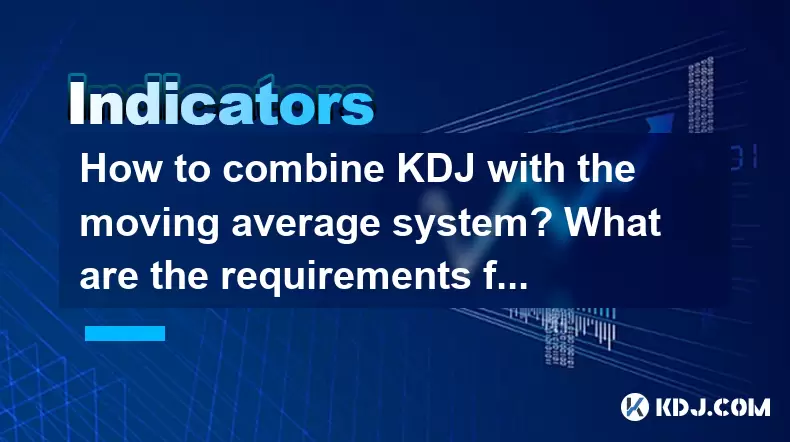
Combining the KDJ indicator with the moving average system can enhance trading strategies by providing more comprehensive signals for market entry and exit points. The KDJ indicator, which measures momentum and trend strength, can be used in conjunction with moving averages to confirm trends and potential reversals. This article will explore how to effectively combine these two tools and discuss the specific requirements for the moving average when a golden cross occurs.
Understanding the KDJ Indicator
The KDJ indicator, also known as the Stochastic Oscillator, is a momentum indicator used to determine overbought and oversold conditions in the market. It consists of three lines: K, D, and J. The K line represents the fastest line, the D line is a moving average of the K line, and the J line is a more sensitive line derived from the K and D lines. When the K line crosses above the D line, it is considered a bullish signal, and when it crosses below, it is a bearish signal. The J line is used to confirm these signals.
Understanding Moving Averages
Moving averages are used to smooth out price data to identify the direction of the trend. There are several types of moving averages, but the most commonly used are the Simple Moving Average (SMA) and the Exponential Moving Average (EMA). The SMA calculates the average price over a specific period, while the EMA gives more weight to recent prices, making it more responsive to new information.
Combining KDJ and Moving Averages
To effectively combine the KDJ indicator with moving averages, traders should follow these steps:
Identify the Trend with Moving Averages: Use moving averages to determine the overall trend of the market. A common approach is to use two moving averages, such as a 50-day SMA and a 200-day SMA. When the shorter-term moving average (50-day) crosses above the longer-term moving average (200-day), it indicates a bullish trend, known as a golden cross. Conversely, when the shorter-term moving average crosses below the longer-term moving average, it indicates a bearish trend, known as a death cross.
Confirm the Trend with KDJ: Once the trend is identified using moving averages, use the KDJ indicator to confirm the trend. If the K line crosses above the D line and the J line confirms the signal, it strengthens the bullish trend indicated by the golden cross. Conversely, if the K line crosses below the D line and the J line confirms, it strengthens the bearish trend indicated by the death cross.
Look for Overbought and Oversold Conditions: The KDJ indicator can also help identify overbought and oversold conditions. When the KDJ lines are above 80, the market is considered overbought, and when they are below 20, the market is considered oversold. These levels can be used to anticipate potential reversals in the trend.
Requirements for the Moving Average When the Golden Cross Occurs
When a golden cross occurs, there are specific requirements for the moving average to ensure the signal is valid and actionable:
Slope of the Moving Averages: The slope of both moving averages should be positive. This indicates that the trend is not only reversing but also gaining strength. A positive slope on both the shorter-term and longer-term moving averages confirms a strong bullish trend.
Volume Confirmation: Volume should increase as the golden cross occurs. Higher volume confirms the strength of the bullish trend and suggests that more traders are participating in the market move.
Price Action: The price action around the golden cross should be bullish. This means that the price should be making higher highs and higher lows, reinforcing the bullish trend indicated by the moving averages.
Time Frame: The golden cross should be confirmed on multiple time frames. A golden cross on a daily chart should be confirmed by a similar trend on a weekly or monthly chart to ensure the signal is robust and not just a short-term fluctuation.
Using KDJ and Moving Averages in Trading
To use the KDJ indicator and moving averages in trading, follow these steps:
Set Up the Indicators: Add the KDJ indicator and the desired moving averages to your trading platform. Ensure that the KDJ settings are appropriate for the asset you are trading, and select the moving averages that best suit your trading strategy.
Monitor for a Golden Cross: Watch for the shorter-term moving average to cross above the longer-term moving average. This is the first step in identifying a potential bullish trend.
Confirm with KDJ: Once a golden cross occurs, check the KDJ indicator. Look for the K line to cross above the D line and the J line to confirm the bullish signal.
Enter the Market: If both the moving averages and the KDJ indicator confirm a bullish trend, consider entering a long position. Set your stop-loss and take-profit levels based on your risk management strategy.
Monitor the Trade: Continuously monitor the trade, paying attention to any changes in the moving averages or the KDJ indicator. Be prepared to exit the trade if the trend shows signs of reversing.
Practical Example
Let's consider a practical example of how to combine the KDJ indicator with moving averages. Suppose you are trading Bitcoin (BTC) and have added a 50-day SMA and a 200-day SMA to your chart, along with the KDJ indicator.
Identify the Golden Cross: You notice that the 50-day SMA crosses above the 200-day SMA, indicating a potential bullish trend.
Confirm with KDJ: You check the KDJ indicator and see that the K line has crossed above the D line, and the J line confirms the bullish signal.
Check Volume and Price Action: You observe that the volume has increased during the golden cross, and the price is making higher highs and higher lows.
Enter the Market: Based on the confirmed bullish trend, you decide to enter a long position on BTC.
Monitor the Trade: You continue to monitor the moving averages and the KDJ indicator to ensure the trend remains bullish. If the KDJ lines start to show overbought conditions or the moving averages begin to flatten or turn downward, you may consider exiting the trade.
Frequently Asked Questions
Q: Can the KDJ indicator be used alone without moving averages?
A: While the KDJ indicator can be used alone to identify overbought and oversold conditions and potential trend reversals, combining it with moving averages provides a more robust trading strategy. Moving averages help confirm the overall trend, making the signals from the KDJ indicator more reliable.
Q: What are the best settings for the KDJ indicator when trading cryptocurrencies?
A: The best settings for the KDJ indicator can vary depending on the specific cryptocurrency and the trader's strategy. A common setting is to use a 9-period K, 3-period D, and a 3-period J. However, traders should experiment with different settings to find what works best for their trading style and the asset they are trading.
Q: How often should I check the moving averages and KDJ indicator during a trade?
A: The frequency of checking the moving averages and KDJ indicator depends on the time frame of your trade. For short-term trades, you may need to check the indicators more frequently, such as every few hours or daily. For longer-term trades, weekly or monthly checks may be sufficient. It's important to balance monitoring the trade with avoiding overtrading based on minor fluctuations in the indicators.
Q: Are there any other indicators that can be used in conjunction with the KDJ and moving averages?
A: Yes, other indicators can be used to complement the KDJ and moving averages. For example, the Relative Strength Index (RSI) can help confirm overbought and oversold conditions, while the MACD (Moving Average Convergence Divergence) can provide additional trend confirmation. Combining multiple indicators can help traders make more informed decisions and increase the reliability of their trading signals.
Disclaimer:info@kdj.com
The information provided is not trading advice. kdj.com does not assume any responsibility for any investments made based on the information provided in this article. Cryptocurrencies are highly volatile and it is highly recommended that you invest with caution after thorough research!
If you believe that the content used on this website infringes your copyright, please contact us immediately (info@kdj.com) and we will delete it promptly.
- Bitcoin Price Wobbles: Crash Watch and Key Support Levels
- 2025-06-23 16:25:12
- Navigating the Crypto Seas: Charting a Course Through Bull Runs and Bear Markets
- 2025-06-23 16:25:12
- BNB Price Check: Stablecoin Surge vs. Prediction Rollercoaster
- 2025-06-23 14:25:12
- Metaplanet's Bitcoin Bonanza: Holdings Skyrocket Amidst Market Swings
- 2025-06-23 14:25:12
- Global Meltdown, Investors, and Safe Havens: Navigating the Storm
- 2025-06-23 14:30:12
- NFT Sales Snapshot: Guild of Heroes, Polygon, and the Market's Shifting Sands
- 2025-06-23 15:25:12
Related knowledge

How much volume is required for the W-bottom to break through the neckline of the time-sharing chart?
Jun 23,2025 at 04:21pm
Understanding the W-Bottom Pattern in Cryptocurrency TradingThe W-bottom pattern is a popular technical analysis formation used by traders to identify potential bullish reversals. It typically appears at the end of a downtrend and resembles the letter 'W' on price charts. In the context of cryptocurrency trading, where volatility is high and trends shif...
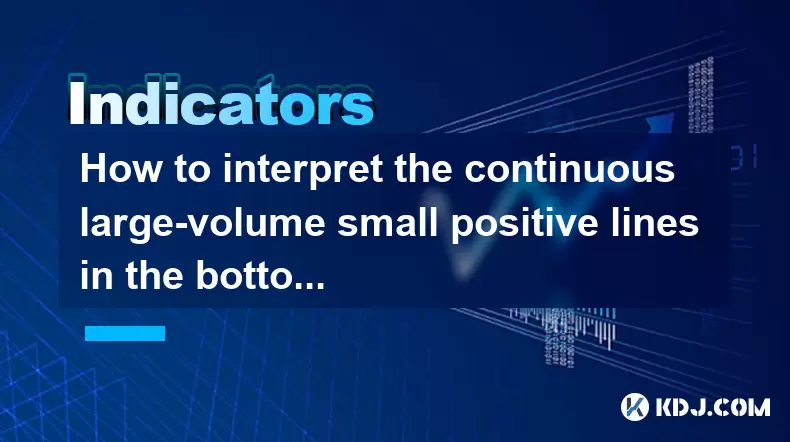
How to interpret the continuous large-volume small positive lines in the bottom area?
Jun 23,2025 at 04:43pm
Understanding the Basics of 'Large-Volume Small Positive Lines'In technical analysis, especially within the cryptocurrency market, the pattern known as 'large-volume small positive lines' refers to a scenario where the price increases slightly (small positive candlestick) but is accompanied by unusually high trading volume. This phenomenon typically occ...

How to read the sideways consolidation after the bottom volume and long positive line?
Jun 23,2025 at 02:28pm
Understanding the Sideways ConsolidationWhen analyzing cryptocurrency charts, sidewards consolidation refers to a phase where prices move within a narrow range without a clear upward or downward trend. This pattern often appears after significant price movements, such as a sharp increase followed by a period of equilibrium between buyers and sellers. In...
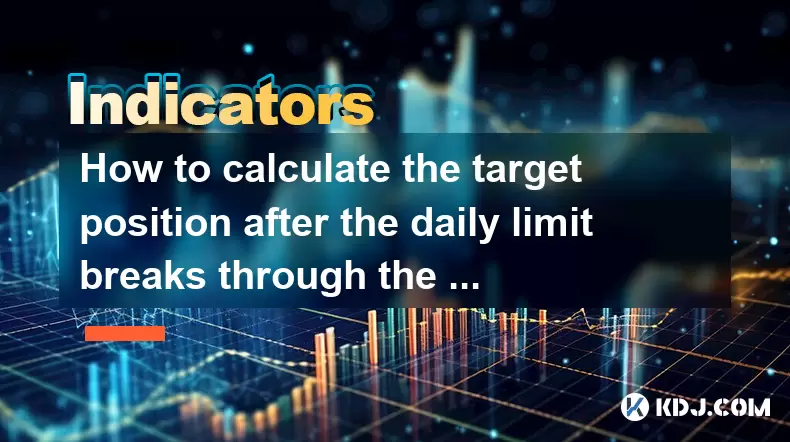
How to calculate the target position after the daily limit breaks through the previous high?
Jun 23,2025 at 02:57pm
Understanding the Daily Limit BreakthroughIn cryptocurrency trading, a daily limit typically refers to the maximum price movement allowed within a single trading day on certain exchanges. When this limit is breached, especially when it surpasses the previous high, traders often seek to calculate the target position or expected price movement following s...
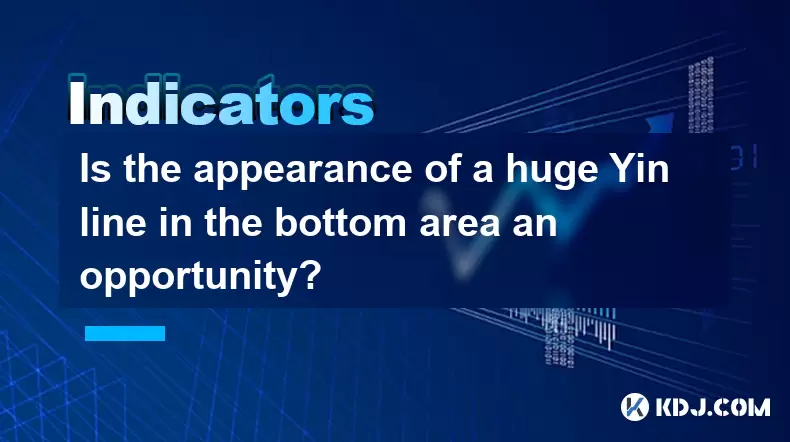
Is the appearance of a huge Yin line in the bottom area an opportunity?
Jun 23,2025 at 04:07pm
Understanding the Meaning of a Huge Yin LineIn technical analysis within the cryptocurrency market, a huge Yin line is often interpreted as a strong bearish signal. It indicates that sellers have dominated the market over a specific period, pushing prices significantly downward. When this occurs in what appears to be a bottom area, traders might questio...
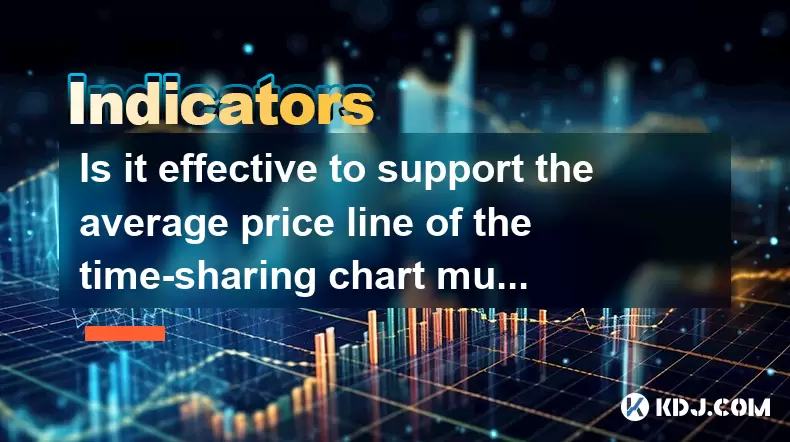
Is it effective to support the average price line of the time-sharing chart multiple times?
Jun 23,2025 at 01:36pm
Understanding the Average Price Line in Time-Sharing ChartsIn cryptocurrency trading, time-sharing charts refer to real-time price charts that display price movements over short intervals, often within a single trading day. Within these charts, the average price line, also known as the Volume Weighted Average Price (VWAP), is a commonly used technical i...

How much volume is required for the W-bottom to break through the neckline of the time-sharing chart?
Jun 23,2025 at 04:21pm
Understanding the W-Bottom Pattern in Cryptocurrency TradingThe W-bottom pattern is a popular technical analysis formation used by traders to identify potential bullish reversals. It typically appears at the end of a downtrend and resembles the letter 'W' on price charts. In the context of cryptocurrency trading, where volatility is high and trends shif...

How to interpret the continuous large-volume small positive lines in the bottom area?
Jun 23,2025 at 04:43pm
Understanding the Basics of 'Large-Volume Small Positive Lines'In technical analysis, especially within the cryptocurrency market, the pattern known as 'large-volume small positive lines' refers to a scenario where the price increases slightly (small positive candlestick) but is accompanied by unusually high trading volume. This phenomenon typically occ...

How to read the sideways consolidation after the bottom volume and long positive line?
Jun 23,2025 at 02:28pm
Understanding the Sideways ConsolidationWhen analyzing cryptocurrency charts, sidewards consolidation refers to a phase where prices move within a narrow range without a clear upward or downward trend. This pattern often appears after significant price movements, such as a sharp increase followed by a period of equilibrium between buyers and sellers. In...

How to calculate the target position after the daily limit breaks through the previous high?
Jun 23,2025 at 02:57pm
Understanding the Daily Limit BreakthroughIn cryptocurrency trading, a daily limit typically refers to the maximum price movement allowed within a single trading day on certain exchanges. When this limit is breached, especially when it surpasses the previous high, traders often seek to calculate the target position or expected price movement following s...

Is the appearance of a huge Yin line in the bottom area an opportunity?
Jun 23,2025 at 04:07pm
Understanding the Meaning of a Huge Yin LineIn technical analysis within the cryptocurrency market, a huge Yin line is often interpreted as a strong bearish signal. It indicates that sellers have dominated the market over a specific period, pushing prices significantly downward. When this occurs in what appears to be a bottom area, traders might questio...

Is it effective to support the average price line of the time-sharing chart multiple times?
Jun 23,2025 at 01:36pm
Understanding the Average Price Line in Time-Sharing ChartsIn cryptocurrency trading, time-sharing charts refer to real-time price charts that display price movements over short intervals, often within a single trading day. Within these charts, the average price line, also known as the Volume Weighted Average Price (VWAP), is a commonly used technical i...
See all articles
























































































